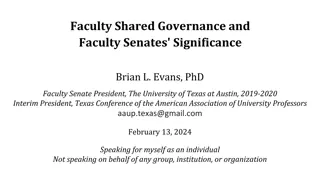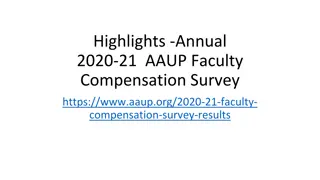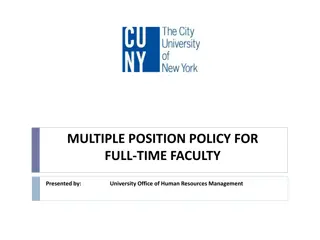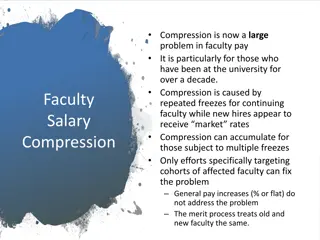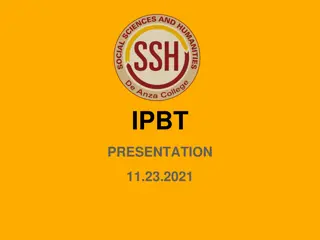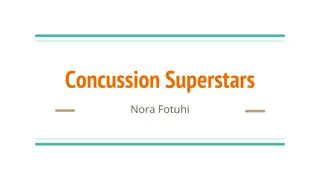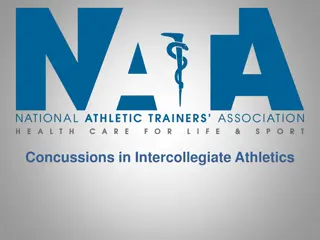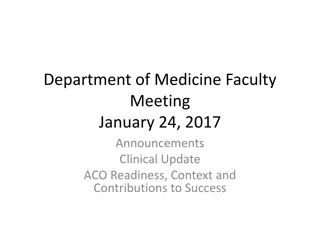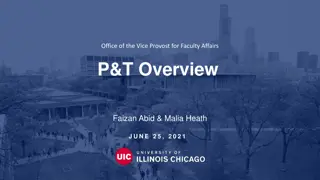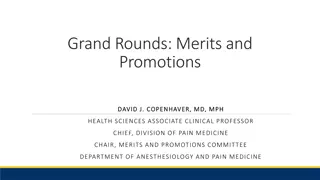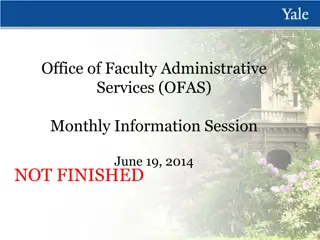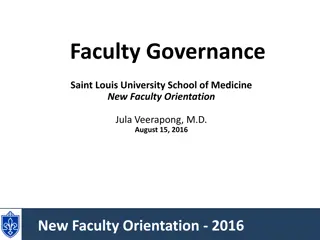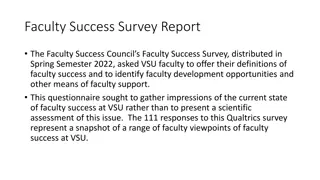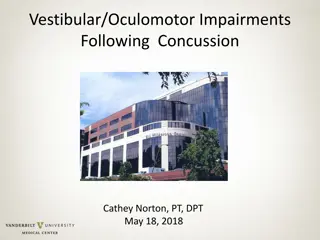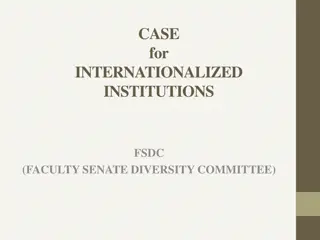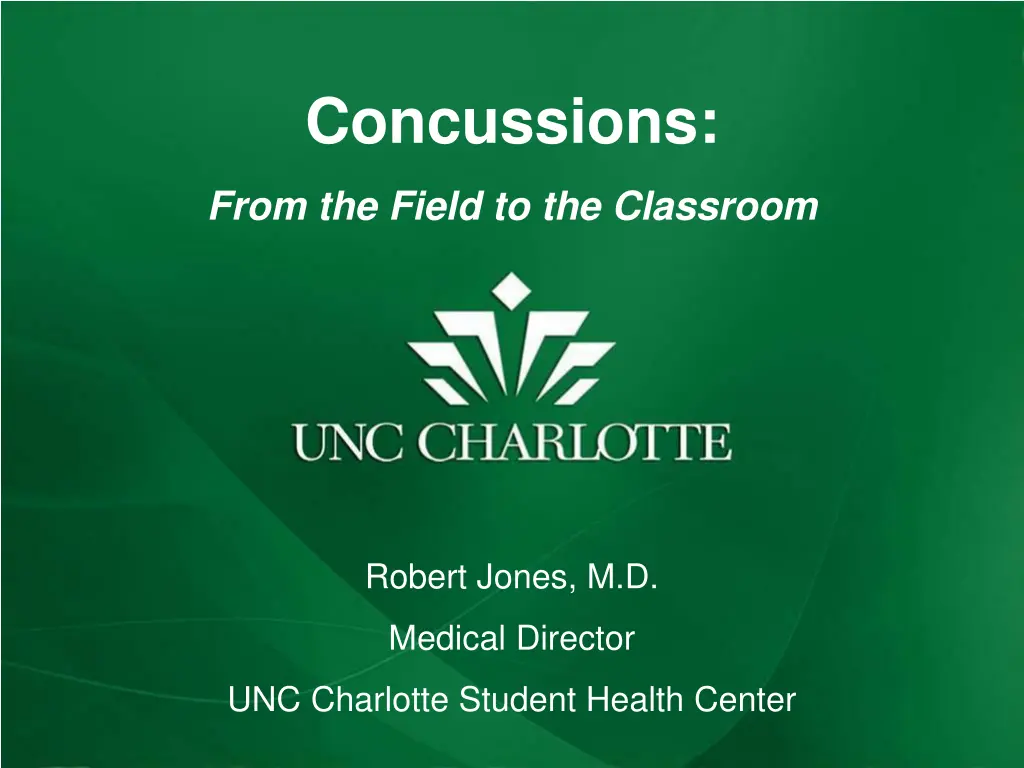
Understanding Concussions: Signs, Symptoms, and Impact
Explore the complexities of concussions, from common signs and symptoms to their impact on cognitive activity. Learn about necessary accommodations for students returning to the classroom post-concussion.
Download Presentation

Please find below an Image/Link to download the presentation.
The content on the website is provided AS IS for your information and personal use only. It may not be sold, licensed, or shared on other websites without obtaining consent from the author. If you encounter any issues during the download, it is possible that the publisher has removed the file from their server.
You are allowed to download the files provided on this website for personal or commercial use, subject to the condition that they are used lawfully. All files are the property of their respective owners.
The content on the website is provided AS IS for your information and personal use only. It may not be sold, licensed, or shared on other websites without obtaining consent from the author.
E N D
Presentation Transcript
Concussions: From the Field to the Classroom Robert Jones, M.D. Medical Director UNC Charlotte Student Health Center
Objectives Identify common signs and symptoms of concussion Become familiar with the potential impact of concussion on cognitive activity Become familiar with the possible accommodations necessary for students to return to the classroom
My Child Doesnt Have a Brain Injury, He Only Has a Concussion DeMatteo CA, et al. Pediatrics. 2010;125(2):327-34.
Definition A complex pathophysiologic process affecting the brain, induced by biomechanical forces
Definition (cont) May be caused by either a direct blow to the head, face, neck, or body with an impulsive force transmitted to the head
Definition (cont) Rapid onset of short-lived impairment of neurological function that resolves spontaneously Mostly a functional disturbance rather than a structural injury
Definition (cont) Graded set of clinical symptoms that may or may not involve loss of consciousness. Resolution of the clinical cognitive symptoms typically follow a sequential course.
Relative Terms Mild Traumatic Brain Injury (mTBI) Concussion o Subgroup of TBI Commotio Cerebri o European nomenclature
Background CDC estimates 1.6 to 3.8 million concussions in sports/recreational activities annually Concussions account for 5% to 9% of all sports related injuries NCAA ISS shows concussion rates doubled from 1988 to 2004 (per 1000 athlete exposures)
Concussion Signs and Symptoms Thinking/Remembering Physical Emotional/Mood Sleep Difficulty thinking clearly Headache Irritability- everything bothers you easily Sleeping more than usual Fuzzy or blurry vision Feeling slowed down Sadness Sleeping less than usual Feeling sick to your stomach/queasy Difficulty concentrating More moody Trouble falling asleep Difficulty remembering new information Vomiting/throwing up Feeling nervous or worried Dizziness Balance problems Sensitivity to noise or light
Concussion Management Most concussions resolve in about 7 to 10 days Physical and cognitive rest until symptoms abate Once symptoms resolve, begin graded progression of exertion Upon completion of activity progression the patient can be cleared to return to play
What is Physical and Cognitive Rest? Sitting/lying in an area with low stimulus- try to increase sleeping No physical exertion No visually stimulating activities: o Watching TV o Using Computers o Texting o Reading o Video Games Sometimes involves missing class
Potential Accommodations Brief absence from classes Rest periods during the day Extension of deadlines Postponement/ Adjustment of tests
Potential Accommodations Extended time on tests Use of audiobooks, note-takers, recording lectures, oral exams Take exams in a smaller, quiet room May have difficulty with video presentations or group work
AnyQuestions? Thank you for your time


